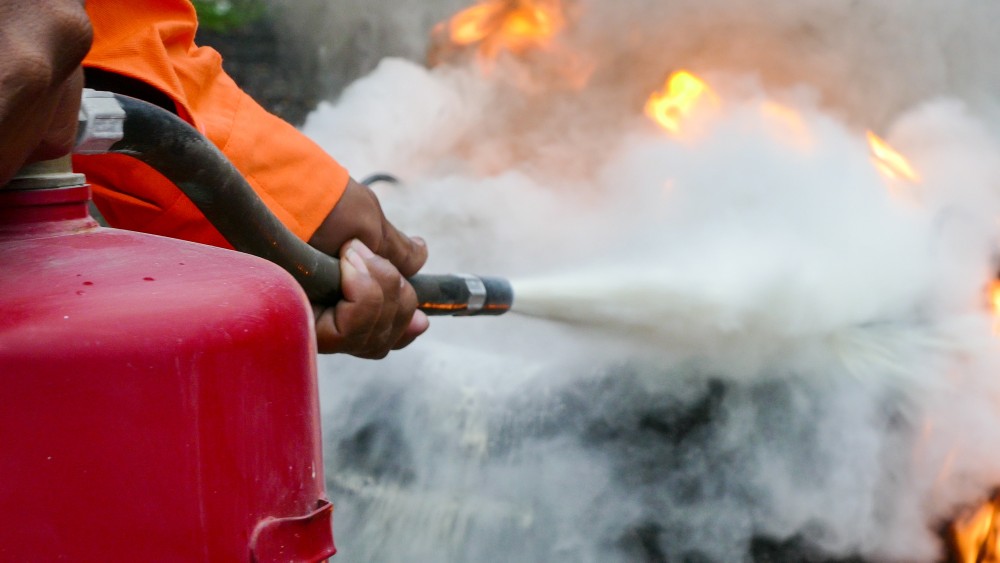Course Progress Bar
0% Complete
0/43 Steps
Course Navigation
Return to HSE LEVEL 1,2 AND 3 COURSE
Fire safety and fire extinguisher use

Fire safety and knowing how to use fire extinguishers are critical skills for workplace safety and general preparedness. Understanding how to prevent fires and respond effectively can save lives and property. Here’s a guide to fire safety and fire extinguisher use:
Fire Safety:
- Fire Prevention:
- Keep work areas clean and free of clutter. Remove flammable materials and waste regularly.
- Store flammable liquids and materials in approved containers and cabinets.
- Ensure electrical systems and equipment are in good condition and follow proper maintenance practices.
- Install smoke detectors and fire alarms in appropriate locations and test them regularly.
- Do not overload electrical outlets, and use surge protectors when necessary.
- Fire Emergency Plan:
- Develop a comprehensive fire emergency plan for your workplace. Ensure all employees are familiar with it.
- Designate evacuation routes, assembly points, and emergency exits. Conduct regular evacuation drills.
- Assign roles and responsibilities to employees in the event of a fire, including fire wardens and first aiders.
- Establish clear communication procedures, including how to call emergency services (e.g., 911).
- Fire Extinguishers:
- Install fire extinguishers in easily accessible locations throughout the workplace, especially in areas with higher fire risks.
- Select the appropriate type of fire extinguisher based on the types of fires that could occur. Common types include Class A, B, C, D, and K extinguishers.
- Ensure that employees are trained on how to use fire extinguishers effectively.
Using a Fire Extinguisher (PASS Method):
When using a fire extinguisher, remember the acronym PASS:
- Pull: Pull the pin at the top of the extinguisher to break the tamper seal.
- Aim: Aim the nozzle or hose at the base of the fire, not the flames. This is where the fire needs to be extinguished.
- Squeeze: Squeeze the handle to discharge the extinguishing agent. Release it to stop the discharge.
- Sweep: Sweep the nozzle or hose from side to side as you discharge the extinguishing agent. This sweeping motion helps cover the entire fire area.
Fire Extinguisher Types:
- Class A: Suitable for fires involving ordinary combustible materials like wood, paper, and textiles.
- Class B: Designed for fires fueled by flammable liquids such as gasoline, oil, and grease.
- Class C: Intended for fires involving electrical equipment or wiring. These extinguishers are non-conductive.
- Class D: Used for fires involving combustible metals such as magnesium, titanium, or sodium. These are typically found in specialized industrial settings.
- Class K: Specifically designed for fires in commercial kitchens involving cooking oils and fats.
Safety Tips for Using Fire Extinguishers:
- Always ensure your safety is the top priority. If the fire is too large, growing rapidly, or if you’re unsure how to use the extinguisher, evacuate immediately and call the fire department.
- Operate the extinguisher within its effective range, which is usually specified on the label.
- Use short bursts of extinguishing agent to conserve the supply. If the fire reignites, you may need to use more.
- Keep your back to an exit when using the extinguisher so you can escape if the fire becomes uncontrollable.
- Once the fire is extinguished, watch for re-ignition, and ensure it is completely out before leaving the area.
- Report the use of a fire extinguisher and the need for its replacement immediately to your supervisor or the responsible authority.
Remember that fire safety is everyone’s responsibility. Regular training, maintenance of fire extinguishers, and adherence to safety procedures are essential for preventing and responding to fires effectively.
